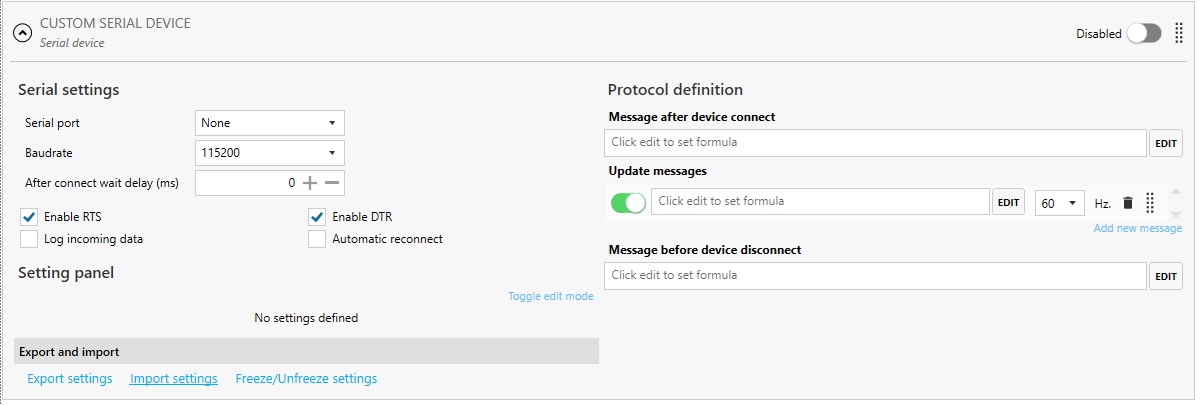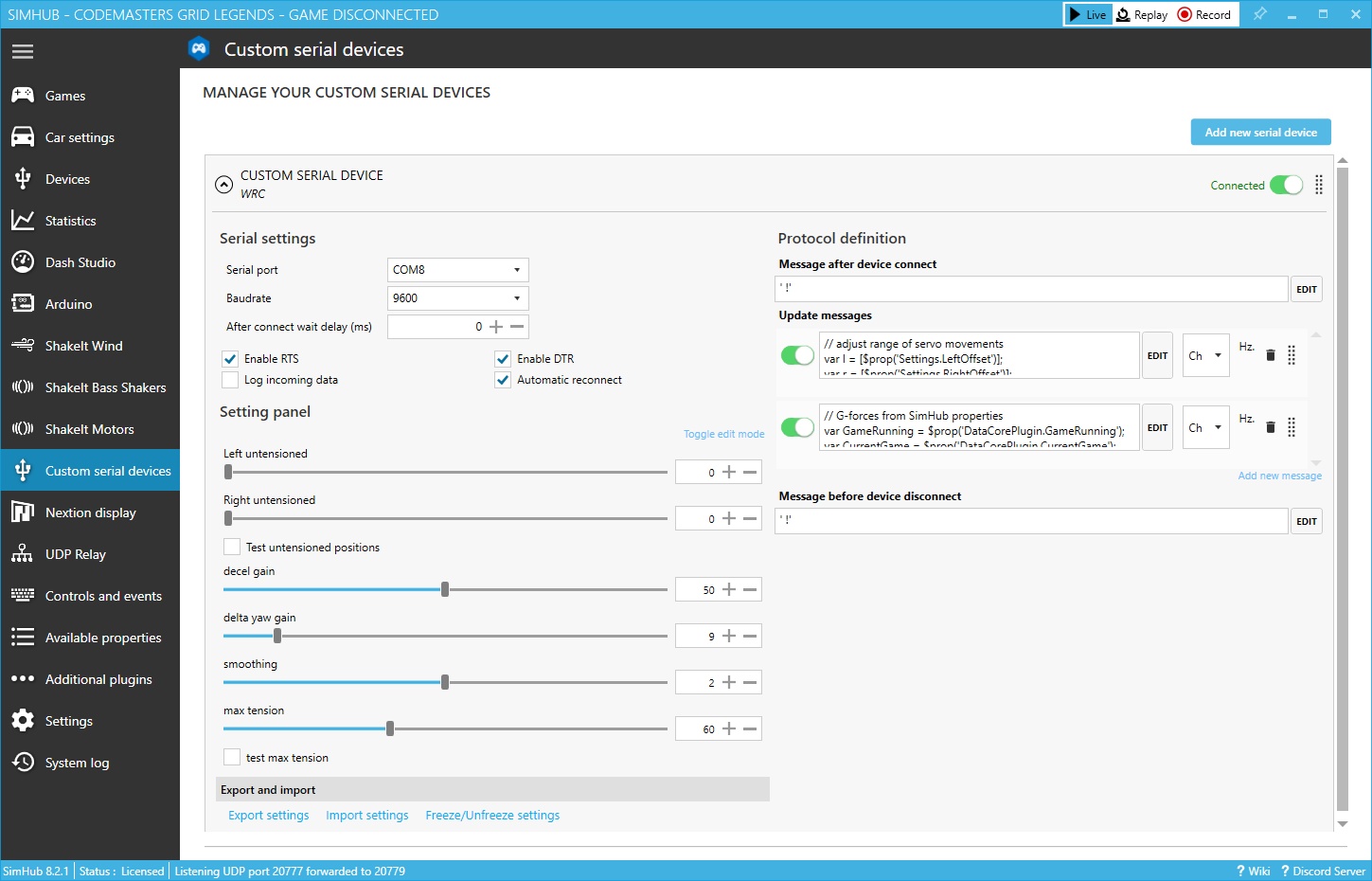Software configuration
Flash Arduino Sketch
Flashing the Arduino is pretty simple - just download the provided sketch from GitHub and upload it to an Arduino Nano (Pro Micro should work fine as well):

Head on to SimHub Settings->Plugins and enable the Custom Serial Device Plugin:

Custom Serial should appear now as tab in the navigation sidebar. Open it and add New Serial Device:

Next step would be to import the Custom Device Settings with the Import Settings link. Open the .shsds profile file and it should load the below settings for you.

Slecet the correct COM prot from the dropdown (if you are using other Arduinos with SimHub this port automatically will be excluded from standard device list). You can keep the default proposed baud rate of 115200, I set 9600 to debug some issues and as it was working OK I presume I left it like this:

Untensioned Sliders: When you first connect the servos they will go to their Zero position. At this point you cna adjust the brackets to your actual desired untensioned setting. Alternatively you can use the two sliders to adjust on the fly. this also was taken into accound in the Arduino code.
Test untensioned positions: Send commnad to put servos in untensioned position. As both custom Program and Arduino code are currenlt set to use servo Zero position this should not have effect.
Decel gain: This adjust the severity of the braking effect.
Delta yaw gain: This is the turning effect - controls how much the inside belt is released/outside tensioned in turns.
Smoothing: Smoothing - this interpolates the input so you get smooth consistent effect instead of constant servo jerking.
Max tension: Set the max angle at which servos stop their rotation. At 65KG this servos are very strong and I highly doubt you will use them at full lock before reaching max angle (at full lock they really hurt my shoulders). Also full lock should be avoided as it can kill the servos + it draws too high current.
Conclusion
Robot/Hobby Servo based Sim Racing Belt Tensioner is very easy project to complete and requires very limited DIY skills. Furthermore at about 100EUR starting point (harness not included) thie easily is the cheapest possible Active Seatbelt Tensioner you can find. With Supercapacitors it providees fast and smooth response, strogner than you will ever need and 65KG servos appear to be quite reliable - mine is under heavy load for past year and still works flawless. On top of that servos are small, light and easy to integrate anywhere (even on a seat mover). The only real concern is noise - hobby servos have high pitch and are relatively noisy. When mounted somewhere far from your seat it could be Ok, but as mine are right below the seat I can hear them even with headphones.
All of the above said - if you are on a lookout to add Active Belt Tensioning to your rig and have very limited resources - look no further. This is great project even if you do not have moition on your setup.

Comments
+5 # jaz2
+1 # NicCf1
0 # SPD
License